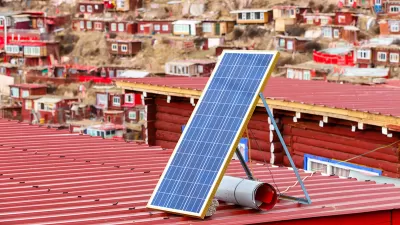When California's carbon market launches in November, it will become the second-largest in the world. A test auction conducted this week with 150 of the companies to be involved in the program went off without a hitch.
With the successful online test auction held yesterday, all systems seem ready to go for the launch of California's cap-and-trade carbon market this fall, reports Tim McDonnell.
"The plan,
which officials hope will put the country's most populous state on
track to cut greenhouse gas emissions 80 percent by 2050, isn't the
first carbon trading scheme in the U.S.: The Regional Greenhouse Gas
Initiative (RGGI), a collective of several northeastern states
(including Massachusetts, which rejoined a
few years after being forced out by then-Gov. Mitt Romney), has been
auctioning carbon credits, called allowances, since 2008."
"But unlike
RGGI, which applies only to power plants, California's plan extends to
all sectors of the economy, which means businesses from paper mills, oil
refineries, and universities to pharmaceutical manufacturers, steel
mills, and food processors like PCP will have a stake in California's
campaign against climate change," writes McDonnell.
"'It's like some brave new adventure,' said Mona Schulman, a PCP vice
president, as she waited for the fall of the digital gavel (the auction
is held online) to start bidding. 'Everybody's in favor of clean air and
the environment being healthy, but there's a lot of uncertainty down
the road.'"
FULL STORY: Curtain rises on California’s planned carbon market

Trump Administration Could Effectively End Housing Voucher Program
Federal officials are eyeing major cuts to the Section 8 program that helps millions of low-income households pay rent.

Planetizen Federal Action Tracker
A weekly monitor of how Trump’s orders and actions are impacting planners and planning in America.

Ken Jennings Launches Transit Web Series
The Jeopardy champ wants you to ride public transit.

California Invests Additional $5M in Electric School Buses
The state wants to electrify all of its school bus fleets by 2035.

Austin Launches $2M Homelessness Prevention Fund
A new grant program from the city’s Homeless Strategy Office will fund rental assistance and supportive services.

Alabama School Forestry Initiative Brings Trees to Schoolyards
Trees can improve physical and mental health for students and commnity members.
Urban Design for Planners 1: Software Tools
This six-course series explores essential urban design concepts using open source software and equips planners with the tools they need to participate fully in the urban design process.
Planning for Universal Design
Learn the tools for implementing Universal Design in planning regulations.
Ada County Highway District
Clanton & Associates, Inc.
Jessamine County Fiscal Court
Institute for Housing and Urban Development Studies (IHS)
City of Grandview
Harvard GSD Executive Education
Toledo-Lucas County Plan Commissions
Salt Lake City
NYU Wagner Graduate School of Public Service




























